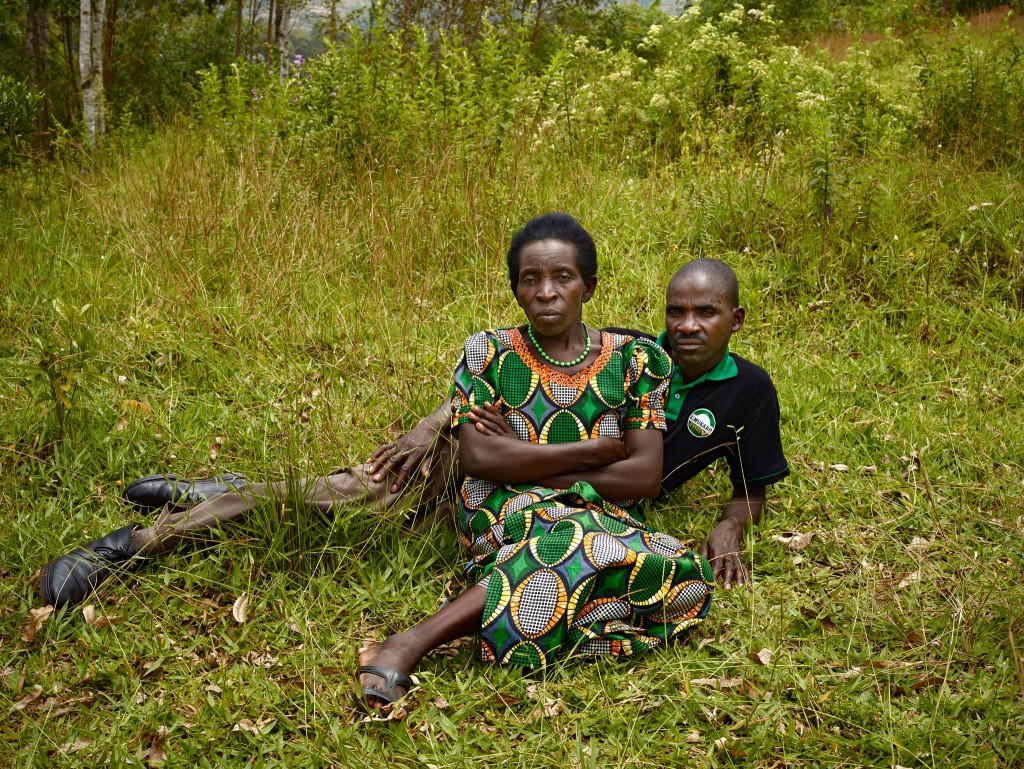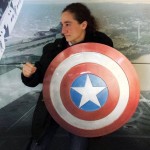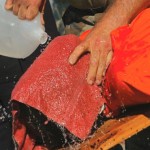This year marks the 20th anniversary of the Rwandan genocide, and, over at The New York Times Magazine, a photographer has put together a series of portraits of Rwandans who have reconciled with the people who killed their friends and families.
The people who agreed to be photographed are part of a continuing national effort toward reconciliation and worked closely with AMI (Association Modeste et Innocent), a nonprofit organization. In AMI’s program, small groups of Hutus and Tutsis are counseled over many months, culminating in the perpetrator’s formal request for forgiveness. If forgiveness is granted by the survivor, the perpetrator and his family and friends typically bring a basket of offerings, usually food and sorghum or banana beer. The accord is sealed with song and dance. …
KAMPUNDU: “My husband was hiding, and men hunted him down and killed him on a Tuesday. The following Tuesday, they came back and killed my two sons. I was hoping that my daughters would be saved, but then they took them to my husband’s village and killed them and threw them in the latrine. I was not able to remove them from that hole. I knelt down and prayed for them, along with my younger brother, and covered the latrine with dirt. The reason I granted pardon is because I realized that I would never get back the beloved ones I had lost. I could not live a lonely life — I wondered, if I was ill, who was going to stay by my bedside, and if I was in trouble and cried for help, who was going to rescue me? I preferred to grant pardon.”
Meanwhile, Forward has a non-fiction essay by a former Israeli sniper, about his experience lying in wait and watching the man he had been assigned to cripple. Read the whole thing.
About a week later, we take down our prime target, and Barry’s boss, the Shamen. He was a clever one, always standing behind bushes, staying low. We must have tracked him through the sights for over five hours, spanning multiple days before finally getting a shot off. It is 10 times harder to shoot someone in the leg than to simply kill him. The leg is narrow, easily concealed by the land, and always moving. And I could have always shot above the leg and claimed it was an accident. No one would have known. It’s ironic how much effort we put into not killing these men.
On this day, the sniper squad has a different lineup. There’s always a rotation, letting guys go home on leave once in a while and rotating which lieutenant is in command. We are in place watching the guy, waiting for a shot at his leg, but he’s kneeling down. Lying in the brush, peering through our scopes, we can see where his birdcage is, and discuss how the only clear shot at his foot is probably if he’s near the cage. At one point the Shamen stands up to pee, and while we can’t get his foot, the spotter can see the guy’s penis from 300 meters.
Today is Palm Sunday, where the whole congregation participates in the memorial of Jesus’s Passion and death. And our lines are “Crucify him” when Pilate asks the crowd if they are willing to turn aside their rage. It’s a good day to think about the people who found a way to being reconciled and the toll that the lack of forgiveness can take on the victimizer.













